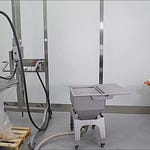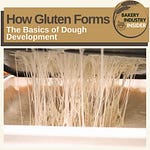At its core, baking powder releases carbon dioxide (CO₂) through the reaction of three components:
Sodium Bicarbonate (Base): Produces CO₂ when reacting with acids.
Baking Acids: A combination of fast-acting and slow-acting acids, releasing CO₂ at different stages.
Starch (Filler): Prevents premature reactions by absorbing moisture.
Double-acting baking powders use two acids with distinct Rates of Reaction (ROR):
Fast-acting acids (e.g., monocalcium phosphate): React upon mixing with liquid.
Slow-acting acids (e.g., sodium acid pyrophosphate): React gradually under heat in the oven.
This dual mechanism ensures a controlled CO₂ release, spreading the leavening effect across mixing and baking.
Practical Applications
1. Maximizing Cake Volume
In high-sugar batters, the delayed gelatinization of wheat starch—the structure-forming agent—can cause challenges. Early CO₂ release may lead to restricted volume. Double-acting baking powders solve this by:
Aerating the batter early.
Sustaining CO₂ release during oven spring for optimal rise.
2. Uniform Texture
The extended CO₂ release promotes even expansion, reducing the risk of uneven or peaked surfaces. This is crucial for decorated cakes requiring consistent layers.
3. Tailoring Flavor Profiles
Different acids influence the cake’s residual salt flavor. By selecting complementary acids, bakers can:
Enhance premium recipes.
Balance sweetness and saltiness effectively.
4. Reducing Sodium
Double-acting powders enable partial sodium bicarbonate replacement, catering to reduced-sodium demands without compromising leavening efficiency or texture.
5. Optimizing Ingredient Ratios
Balancing acid and base neutralization prevents residual alkalinity or acidity, ensuring:
Consistent CO₂ generation.
Stability during storage and handling.
Best Practice For Professional Bakeries
Monitor Batter pH: Keep pH levels optimal for efficient leavening.
Calibrate ROR: Match acid combinations to specific recipe timelines.
Control Mixing Time: Overmixing can deplete fast-acting CO₂.
Adapt to Environment: Adjust for altitude and humidity to maintain performance.
Test Formulations: Fine-tune acid-base ratios through testing under production conditions.
Source: https://lnkd.in/dTbC4qkK











